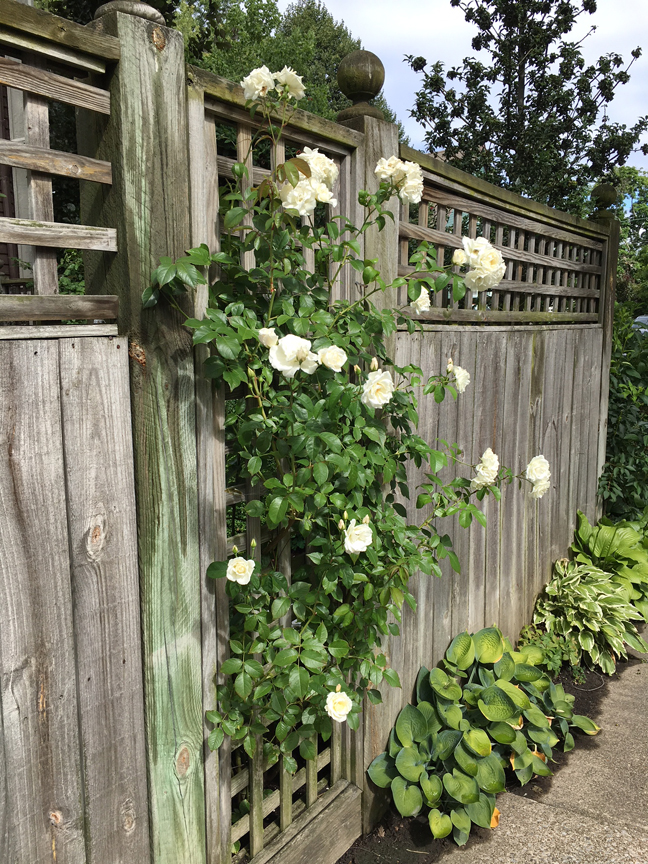
Spring has finally sprung and the plants are springing out of the soil. Some will spring farther than others, so this is the time when I’m thinking about tying and support.
Inside the conservatory, climbing plants are relatively easy to deal with. They’re in pots, so you can stick a little trellis right in the potting mix for the plant to clamber up.
Many of the vining plants we grow indoors evolved to climb along the soil or up trees in the understory of a rain forest, seeking a little bit of light. They are opportunists. If you look closely at the stem of pothos or English ivy, for instance, you can see little nubbins that are actually the beginning of roots. When the stem happens to run into soil or a little deposit of plant debris in a crevice of tree bark or the joint of a branch, it can grow a root and anchor itself.
Other plants send out tendrils–skinny, curling stems that wave around, probing for something to grab. Clematis, sweet peas, and beans are in this category. They’ll climb if I give them something to hold onto, as long as the cross-members of the trellis or arbor aren’t too thick for a tendril to grasp.
Some garden plants can be made to go high, although they aren’t naturally inclined to climb and have no attachment devices. Tomatoes are in this category. They evolved as rambling vines with little red berries, creeping along the ground in Central America. Even the varieties we’ve developed and selected for our gardens, with their big, juicy fruits, still want to sprawl.
To lead tomato plants up rather than out and save some garden or greenhouse space for other things, I need to cage them or erect trellises or poles. A wire cage will mostly contain a tomato plant by itself, although I’ll come back from time to time and tuck in the stray stems or prune them off. To grow a tomato up a trellis or a pole, I’ll need to add ties as the stem grows.
I tie tomatoes with strips torn from all-cotton rags. They are soft and flexible and will eventually rot away in the compost when I dispose of the tomato plants at the end of the season.
I’m also training climbing roses. Roses are naturally shrubs, not vines, with no natural climbing ability. The rose varieties we call “climbers” or “ramblers” are simply shrub varieties selected for having unusually long, straight canes. To make roses cover a wall, arbor or trellis, you need to guide the stems against a support and tie them to keep them there.
I’m pruning off the winter-killed dead wood from my climbing roses and deciding on a trajectory for each cane. That depends in part on knowing that climbing roses bloom more on canes that are growing horizontally.

Over the next few months, I’ll gently bend each growing branch to my will. For this purpose, I use green-died jute twine, which is unobtrusive in this ornamental part of the garden. Any time I’m tying up plants, I’m careful to leave plenty of slack so the ties won’t cut into the stems as they get thicker and the plant can flex in the wind.
I find it’s always best to plan ahead. If I put it off, in a few weeks I may find myself wrangling an octopus of a tomato plant or a scratchy snake of a rose cane. It’s better to assert control as the season starts.


